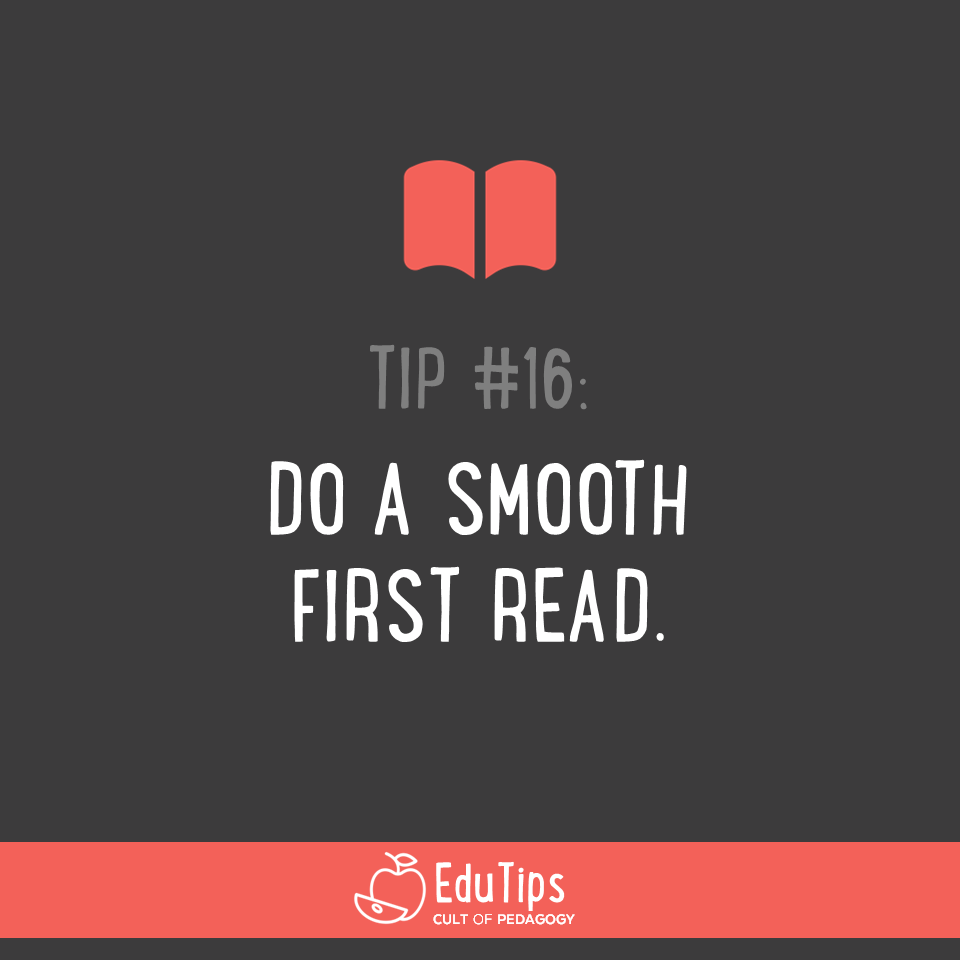Sponsored by Edulastic.

Sometimes you’ll find yourself in a teaching situation where you need to read something out loud to students. It might be a story, an article, a passage, a letter, et cetera. And it’ll be something that contains places that you know you’ll need to discuss, explain, or elaborate on something. These interruptions might be necessary and even desirable when doing a deep dive into a text, but they can really mess up a listener’s experience of the text.
So the next time you have something like this in your lesson plan, do a smooth first read of the text before dissecting, analyzing, or explaining it. Let students know in advance that you won’t be stopping the first time, but that you’ll go back later to answer questions and discuss some important parts. The first read is to just get a feel for the overall text.
This tip comes from literacy expert Angela Peery, who wrote an article for us on strategies for building student vocabulary — we also talked about these strategies in episode 182 of the podcast. In the article, she describes a strategy where students study a few carefully selected words from a text, but before they do that, they just listen to the text. “Don’t stop in the first reading to discuss the words at length,” she says. “Students need to hear complex texts being read aloud fluently—especially a first reading—so they can start to process the story itself or the complicated ideas present in many nonfiction and content-specific texts.”
If you’re concerned that the text contains too many words or concepts that students won’t know, then do a brief lesson beforehand to build background knowledge on those things so students will be better prepared to listen for them. Then do that nice smooth, fluent first read so they can concentrate on and enjoy the text all the way through.
See all EduTips here.
